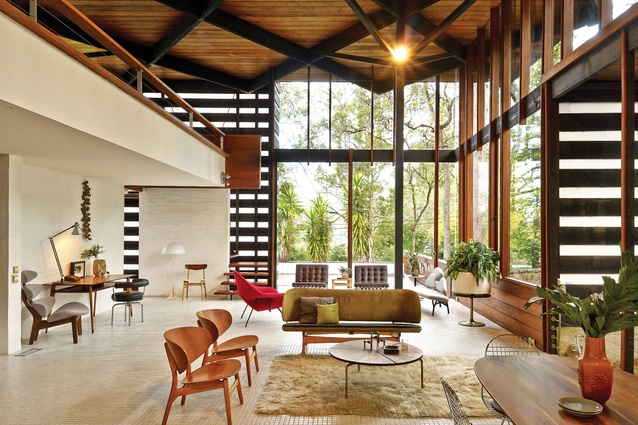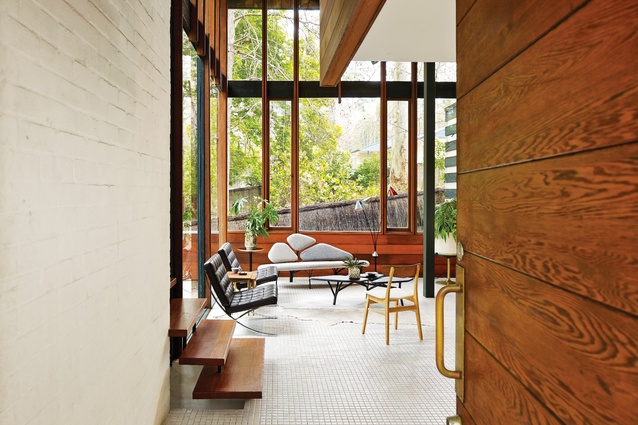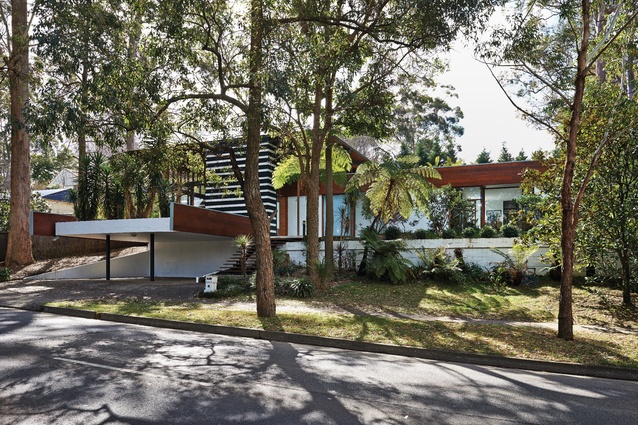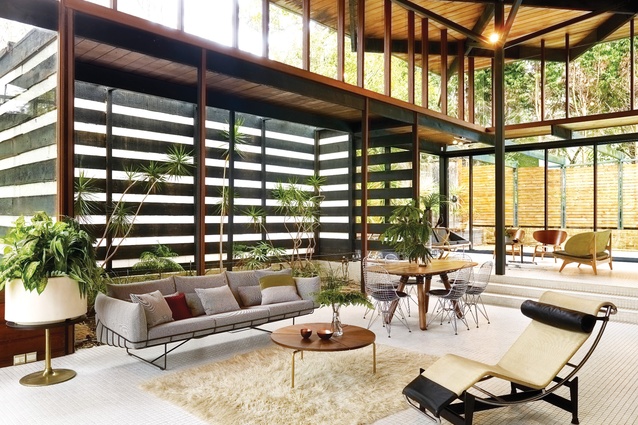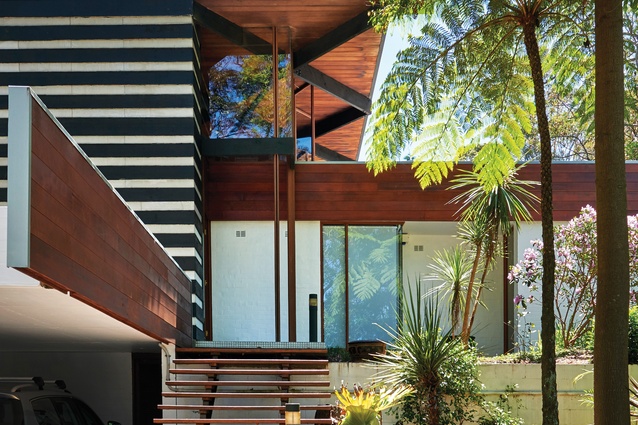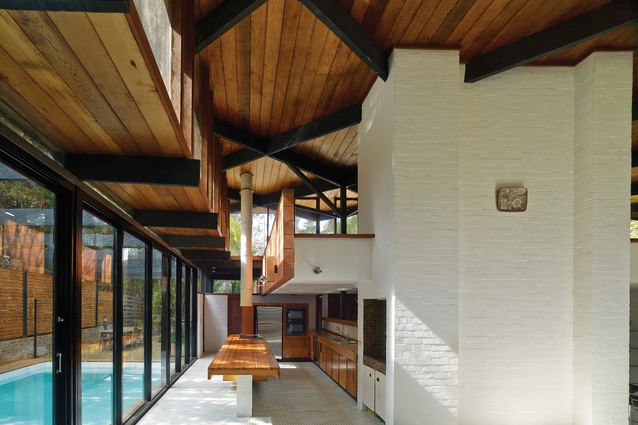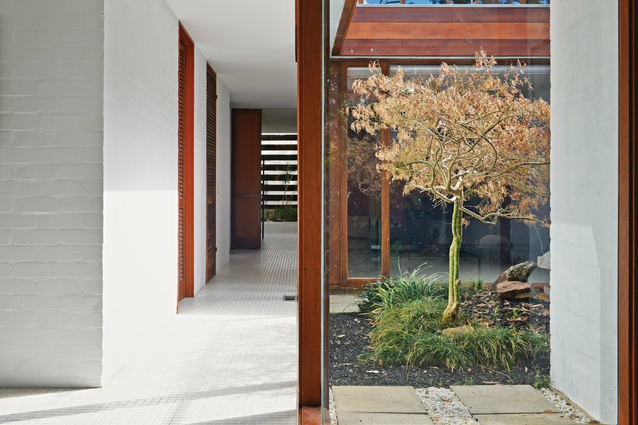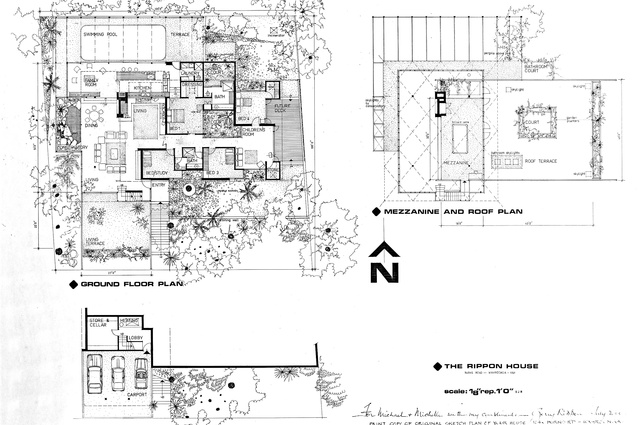Zen master: Rippon House
Designed in 1969 by architect Gerry Rippon for himself and his family, this house embodies a personalized vision for living in Australia that is still relevant today.
An architect’s own house is always an interesting case study: an expression of their personal ideals and values, unconstrained by the divergent aims of a client. The site – and the budget – become the only limiting factors. Gerry Rippon, a prolific but not well-known architect, claims the house he designed in 1969 (and completed in 1971) for his family at Wahroonga, in northern Sydney, as his best work, and certainly nothing in his output quite matches it for innovation or a kind of sensual joy. He is quoted as saying that it was the one job where he had no trouble with the client, and could express himself exactly as he wished.
Rippon chose the then-vacant block for its setting among a remnant forest of tall Sydney blue gums, taking inspiration for the design from their delicately branched tracery and the dappled beams of light they cast. His vision for the entire house became clear within a few minutes of him visiting the site for the first time.
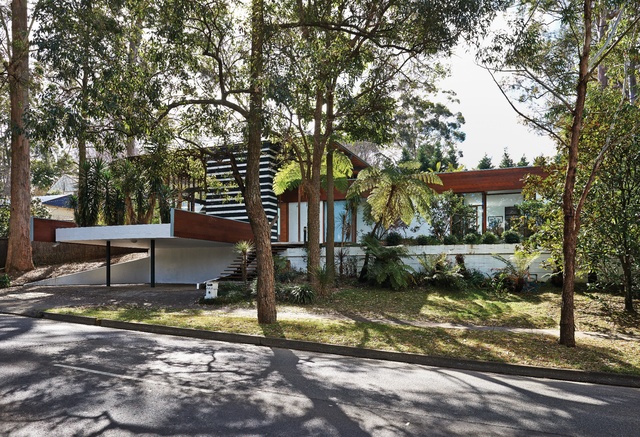
This extended – and largely borrowed – landscape is now compromised by adjoining suburban gardening, and the few remaining trees stand as sentinel reminders of a lost forest, in which the Rippon House stands unaltered and undiminished. Rippon rejected the obvious response to a house among trees – a long, low form that did not compete with their height – and instead created a pair of interlocking pavilions, the main one tall, glassy and branched, as delicate and light as the forms of the eucalypts; the low eastern one a simple sculpted masonry form painted white.
At 410 square metres, this is a large house even by today’s standards; in 1969, when an average family house was about 140 square metres, it must have seemed extraordinarily lavish. It does seem to fill up its block, leaving defined garden courtyards rather than a bushland setting. As well as the vast extended living-dining space stepping from front to back, there are a kid’s rumpus room and a fifty-square-metre floating mezzanine – a genuine tree house envisaged as Rippon’s studio but apparently never used as such. The generosity of these spaces is emphasized by the extended vistas created throughout the house – long axial and diagonal views each foregrounded by a piece of architectural “sculpture” and terminated in a light-filled view of the garden. When moving through the house, the spaces seem masterfully controlled, an orchestrated sequence of tall and low, open and defined, heavy and light.
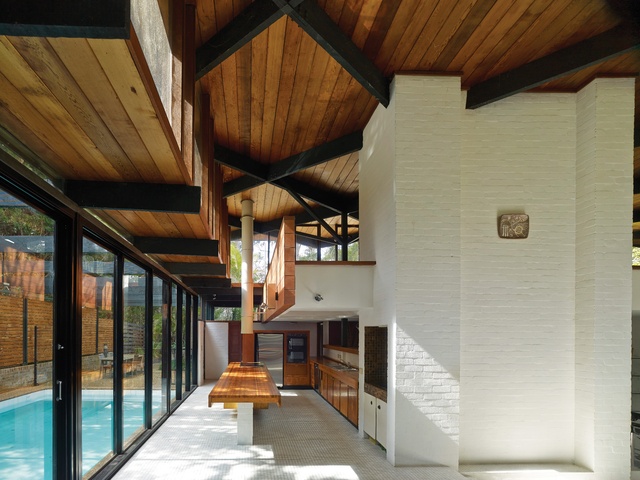
The low bedroom wing is interesting, especially in its incorporation of many angles and folds enclosing indoor and outdoor glazed spaces. But it is not strikingly original or surprising in contrast to the tall living wing, which is essentially a delicate timber garden canopy enclosed by glass. This is placed so that its long eastern side engages with the open end of the masonry block, here opened out to form a low-ceilinged winter sitting area wrapped around a fireplace. The rectangular volume formed by its flat roof is surrounded by glass, with a variety of shallow bays with roofs so slender they almost vanish. This generosity of daylight and thinness of envelope celebrates a union with the outside that is impossible now due to the strict controls set up by BASIX (Building Sustainability Index), which assumes a reliance on airconditioning rather than airflow.
Below the two simple overlapping rectangles of the flat roofs, this interlocking of forms and planes is a continued theme throughout the house, from the extended ends of benches and shelves to the carefully modelled corners of balustrades and walls at the entry. Weightless cantilevers of floors, walls and roofs dramatize this cubist play of planes and shadows, while the materiality of the surfaces and the supporting structure is considered and original. The living pavilion is supported on a mystifyingly insubstantial net of diagonal timber beams and branching tree columns in steel, the tall glass walls framed by delicate layered mullions, each individually expressed as it extends past its junctions, top and bottom. The role of each element is clearly defined by its finish – structure, whether steel or timber, is black, joinery and infill is stained a rich, warm brown. Masonry is white, as are the unifying floors, in a high-quality white glazed tile.
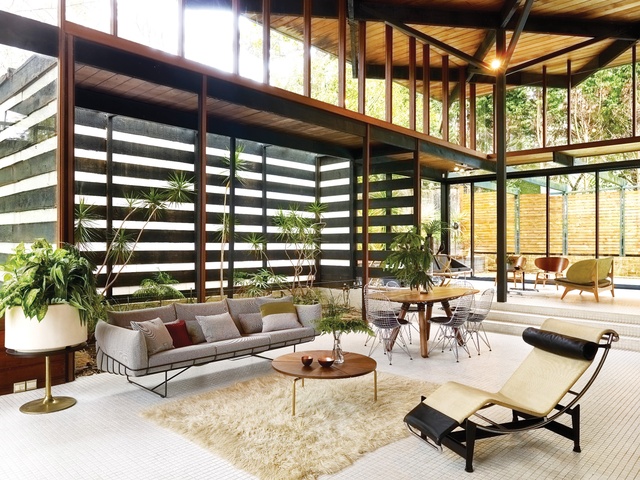
The house has become a Sydney landmark for its two dramatic gestures to the street – a gravity-defying cantilevered deck over the carport, and the expressed two-storey volume of the stairs, which is enclosed in a forest-green-and-white-striped screen made of milk glass and stained sawn timber. Again an impossibility in this world of mass and insulation, this device is repeated to enclose a garden, complete with pond, adjoining the dining area. The stark contrast of the dark green and white has both a Japanese quality of delicacy as well as a 1960s pop sensibility, which enlivens and enriches the Sydney School finishes of white bagged brick and stained rough-sawn timber elsewhere.
The Rippon House has all the considered refinement of a Zen tea house but on a much larger scale, its multiple volumes and planes composed with all the care of a tiny retreat. This slightly undefinable sense of a Japanese aesthetic combines with what is now called a “resort style”: the openness to the outside, with the pool at the foot of the sliding doors and the indoor garden, the thin enclosure and floating roofs, all giving the feel of a Balinese bure. Yet it s location could be nowhere but Sydney, even without the gesturing gums. More refined and finer than the mid-60s “nuts and berries” of the Sydney School, the home develops that design approach to a new direction, one that is at once intricate and adventurous but warm and homey, sweepingly open and cosily enclosed.
That it has survived largely intact for fifty years is a testament to the quality and thoughtfulness of the design and construction, and to the strength of a highly personal but still resonant vision for living in Australia.
Gerry Rippon of Towell and Rippon
Gerry Rippon (1931–2011) studied architecture and completed a Town Planning Diploma at the University of Sydney. After a few years of employment in various Sydney firms, he formed his own company and remained self employed for the rest of his working life. He was made a Fellow of the RAIA in 1970. His work covered everything from modest cottages to multi-residential and commercial buildings in Sydney, Melbourne, Canberra, Gold Coast and various rural towns.

